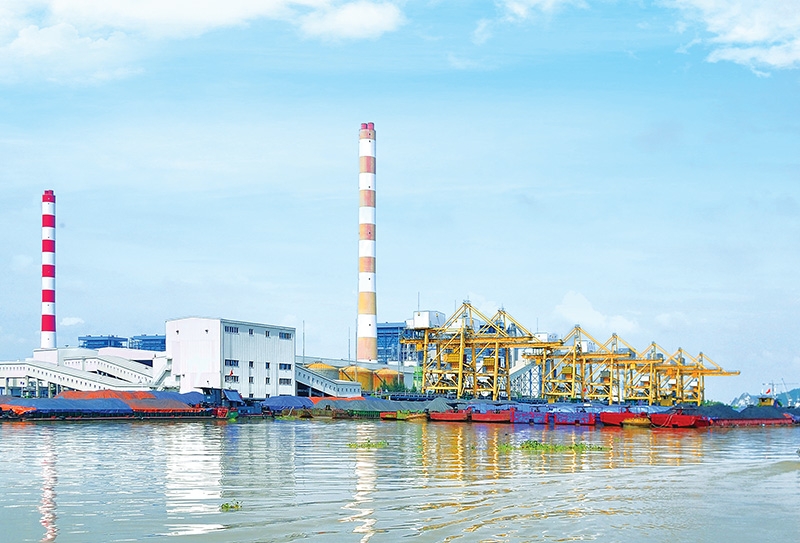Coal-fired schemes on ice
 |
| As environmental concerns are heightened globally, countries and businesses are looking to ensure a new energy mix (photo Le Toan) |
Standard Chartered last week announced that it would exit three Southeast Asian coal plants worth an estimated $7 billion, including two Vietnamese-based projects. Although the bank did not name the projects outright, sources have widely suggested that the exits involve Vung Ang 2 and Vinh Tan 3 plants in Vietnam, along with Java 9 and 10 in Indonesia.
Standard Chartered revealed in 2018 that it would cease the financing of new coal plants, becoming the first major finance group with a focus on Southeast Asia to halt investment into any further coal power initiatives.
Group chief executive at Standard Chartered Bill Winter explained, “We’ve made significant commitments to reduce carbon sessions from the business we fund and work with in the markets most affected by climate change. We will increase our funding for renewable energy and clean technology by $35 billion over the next five years. Although we previously announced we would not fund any new coal-fired power stations, we will also withdraw from three projects that we had agreed to fund previously.”
However, the lender continued to prop up several projects in the region, including the 1,200MW Vung Ang 2 and 1,980MW Vinh Tan 3 plants.
Big players walking away from coal-fired ventures is not a new phenomenon as international institutions and banks have previously declared policies to tighten financing policy for coal-fired power projects in order to tackle global climate change issues as well as their commitment to reduce greenhouse gas emissions.
Earlier this year Southeast Asia’s three largest banks – United Overseas Bank, OCBC, and DBS Bank, all from Singapore – said they would cease new coal funding.
Last year, Mitsubishi UFJ Financial Group, which is Japan’s largest lender and largest bank by assets, announced that it had reviewed lending policies and would only provide support to high-efficiency generators which help to reduce emissions, including through carbon capture and storage, as well as plans to stop offering loans to coal-fired power plants.
Meanwhile, Sumitomo Mitsui Banking Corporation had already applied the standard to new loans for coal-fired power plants.
The latest happenings come at a time when Vietnam faces up to power shortages from 2021 as the power demand outpaces construction of new power plants. The World Bank has estimated that Vietnam needs $150 billion for energy sector development by 2030, with the country’s power demand growing by 8 per cent a year over the next decade.
A representative of a build-operate-transfer (BOT) coal-fired project in Vietnam who declined to be named told VIR that funding is complex and this type of project requires huge capital, with environmental concerns taken into consideration. Although the project he is involved in will apply the latest high technology, the entire venture could end up on the scrapheap if it cannot arrange funding next year.
To meet the surging demand for power, Vietnam needs 60,000MW of electricity by 2020, 96,500MW by 2025 and 129,500MW by 2030. This means the total installed capacity would have to increase by 6,000-7,000MW of electricity per year. Meanwhile, BOT projects in the power sector have been sluggish, with lengthy preparation times.
According to the Ministry of Industry and Trade, four BOT initiatives under construction include the $2.3 billion Hai Duong at 1,200MW, Duyen Hai 2 (1,320MW), Nghi Son 2 (1,200MW), and Van Phong 1 (1,320MW).
The Hai Duong facility, licensed in 2011 through a joint-venture between Jaks Resources and China Power Engineering Consulting Group, is expected to run online first, but is currently around a year behind approved completion targets.
What the stars mean:
★ Poor ★ ★ Promising ★★★ Good ★★★★ Very good ★★★★★ Exceptional
Related Contents
Latest News
More News
- Mondelez Kinh Do - a chapter of purpose-led leadership in Vietnam (December 18, 2025 | 09:44)
- VNPAY services receive the highest-level PCI DSS international security certificates for six consecutive years (December 17, 2025 | 23:47)
- PPL extends its reach into ASEAN (December 17, 2025 | 15:44)
- Over 600 BUV graduates meeting quality benchmarks across triple quality assurance levels (December 17, 2025 | 13:00)
- HEINEKEN Vietnam partners with Ho Chi Minh City Traffic Police on road safety drive (December 17, 2025 | 09:42)
- BUV and China’s CSCSE sign MoU to boost educational cooperation (December 17, 2025 | 08:00)
- PVT Logistics honoured with ‘Fast Enterprise Award’ at APEA 2025 (December 16, 2025 | 18:22)
- Empowering Sustainable Data Centers with Smart Infrastructure Solutions (December 16, 2025 | 13:59)
- Vietjet wins gold ESG transport sustainability award in Taiwan (China) (December 13, 2025 | 22:03)
- Legal framework completed for national digital transformation (December 13, 2025 | 21:55)

 Tag:
Tag:






















 Mobile Version
Mobile Version